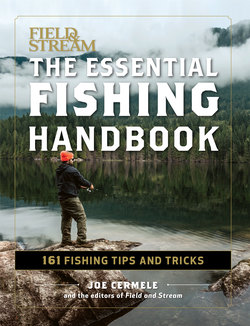Читать книгу The Essential Fishing Handbook - Joe Cermele - Страница 47
На сайте Литреса книга снята с продажи.
Оглавление3
5
Get
Scoop on Fly Reels
A spinning reel that costs $30 is going to function mechanically the same as one that costs $,000. Fly reels, however, are different. If you’re in the market for a new one, understanding the advantages and disadvantages of the two most
common styles of internal gears can help you determine how much to spend and which reel is best for you. It ultimately boils down to what species of fish you intend to hook, and how hard that fish is going to fight.
CLICK-PAWL DRAG In the early days of flyfishing, all reels featured a click-pawl drag. In a simple configuration, a gear fixed to the back side of the spool locks into triangle-shape clickers held in place with tension on the inside of the reel frame. When the spool turns, the clickers keep up tension to stop the line from overrunning, as well as to stop the spool from moving in reverse. Some click-pawl reels feature adjustment knobs that allow the angler to change the amount of pressure on the clickers, thus making it easier to reduce tension when stripping line off to cast, and adding it when a fish is pulling against the reel. Click-pawl drags are still popular today, but they are mostly found on inexpensive reels. Click-pawls also are typically reserved for chasing smaller fish, such as stream trout and pond bass. It doesn’t make much sense to spend a ton of money on a click-pawl for small-water applications, as the reel is lile more than a line holder.
DISC DRAG Disc-drag fly reels are certainly more than line holders. These reels use a series of stacked washers sandwiched between plates covered in materials like cork or carbon fiber that be can compressed or decompressed via a drag adjustment knob toincrease or decrease tension.Disc-drag systems factor in the amount of heat generated when a fish is spinning the drag quickly, as well as the torque applied during a hard run. Disc-drag reels can cost a prey penny depending on the material used in construction. But if you’re chasing salmon, steelhead, striped bass, or tuna that are going to take a lot of line off the reel, you’ll want the reliability of a solid disc drag. Many disc drags are also sealed within the reel frame by a metal housing. This is particularly important to look for if the reel will be used in saltwater, as the housing keeps water out of the drag, thwarting corrosion and making sure moisture between the discs doesn’t compromise the drag’s performance.
the Inside
